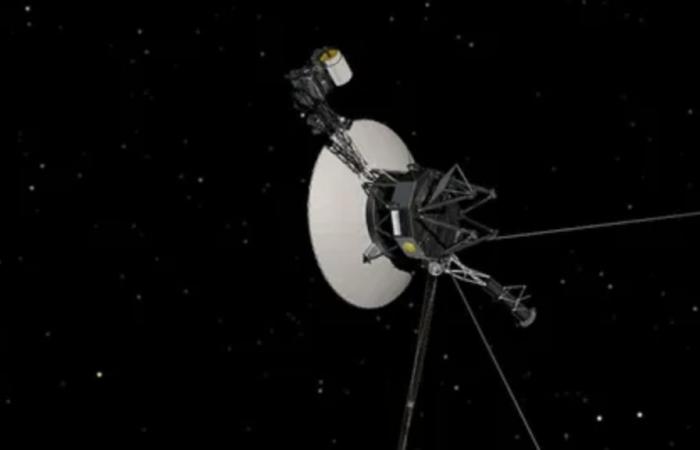Last Updated:November 01, 2024, 4:00 PM IST
NASA has stated that although the S-band consumes less power, Voyager 1 has not communicated with Earth using this method since 1981.
NASA lost communication with its spacecraft. (Image credit: NASA/JPL-Caltech)
NASA’s Voyager 1 spacecraft has encountered a significant communication issue, resulting in the inability to transmit clear information back to Earth. The problem reportedly originated from the spacecraft’s Flight Data Subsystem (FDS), a crucial component that encodes, compresses, and formats science and engineering data for transmission.
According to the space agency’s blog post, the flight crew instructed the spacecraft’s heater to be activated on October 16. There should have been sufficient power for Voyager 1 to operate the heater, but the instruction triggered the fault prevention system. On October 18, the crew identified the issue when the Deep Space Network failed to receive Voyager 1’s signal.
As per NASA, the spacecraft typically uses a device known as an X-band radio transmitter for communication with Earth. When the connection appeared to completely fail, the flight crew suspected that Voyager 1’s FDS had been activated twice more, resulting in the X-band transmitter being turned down and the system switching to the S-band, a secondary radio transmitter.
NASA has stated that although the S-band consumes less power, Voyager 1 has not communicated with Earth using this method since 1981. Its signal is considerably weaker than that of the X-band transmitters because it operates on a different frequency.
According to Space.com, on November 14, 2023, Voyager 1 began transmitting a repetitive pattern of binary code that contained no meaningful message. This garbled output indicated a problem within the FDS, which is responsible for relaying information about the spacecraft’s status and scientific findings. While the spacecraft remained capable of receiving commands from mission control, its communication ability was compromised.
In response, NASA engineers implemented several testing procedures to identify the underlying issue. In March 2024, they transmitted a command known as a “poke” that prompted the FDS to execute various software sequences. This command yielded a partial readout of the FDS memory, revealing that approximately 3% of its memory had been corrupted. The corruption was believed to be caused by cosmic rays or the normal wear and tear of the chips after more than forty years in space.
Once the specific cause of the corrupted memory was identified, NASA professionals successfully transferred the essential code from the affected chip to the functional parts of the FDS memory. The first successful fix was transmitted on 18 April 2024, and by 20 April, NASA reported that Voyager 1 was once again responsive to commands.
In light of the current issue, the team is now collecting information to ascertain what went wrong and to restore Voyager 1 to regular operations.
News viral NASA Confirms Voyager 1 Has Gone Silent After 47 Years In Space






